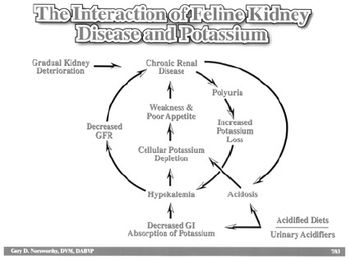
Biochemical profiles may provide a definitive diagnosis in some cases while in other cases the information is useful mostly in ruling in or ruling out differential diagnoses.

Biochemical profiles may provide a definitive diagnosis in some cases while in other cases the information is useful mostly in ruling in or ruling out differential diagnoses.

The practice of Veterinary Medicine offers a unique and extremely rewarding professional life.

Many sheep and goat producers are unaware of zoonotic diseases that can be passed from animals to man. Some zoonoses such as pinkeye or soremouth cause symptoms in the host animal so that the producer knows the animal is ill, but he may not realize that the disease could be transmitted to himself or his family.

When a patient first arrives we have all been taught the ABCs of emergency care

Herd health programs developed by veterinarians in cooperation with producers strive to maximize health and production while decreasing the incidence of a variety of economically important diseases.

Practical management of GI emergency patients.

Acupuncture (AP) has been used successfully in the treatment of numerous gastrointestinal (G.I.) conditions including vomiting and diarrhea, constipation and pancreatitis.

There are many causes of external lumps and masses in sheep and goats, yet many producers assume that all external masses are abscesses.

Indications include traumatic reticuloperitonitis (TRP), abomasal ulcer, peritonitis, uroperitoneum, chronic weight loss, abdominal mass.

Disease conditions that lead to anemia can be divided into two general categories: regenerative and nonregenerative.

Integrative Veterinary Medicine is defined as the integration of conventional and complementary and alternative diagnostic and therapeutic approaches into a comprehensive preventive and therapeutic approach to disease.

Administering pharmaceutical agents is one of the most frequent and most important activities of the bovine veterinarian.

Presenting new drugs and procedures that have been very helpful and leading to recovery (from laser, to electromagnetic resonance, to hyperbaric oxygen (chambers that do not cost and arm and a leg).

Practical management of patients in cardiopulmonary arrest.

Bleeding disorders can pose diagnostic challenges, but a logical approach to testing for bleeding disorders can simplify the process.

There has been a great increase in interest in veterinary acupuncture recently, both by the public and the veterinary medical community.

There is a wide variety of diagnostic tests available to practitioners for infectious and immune-mediated diseases.

It is known that high blood pressure is associated with renal disease in many species including cats and dogs. That this is important is known from many studies including ones involving dogs.

Bitches with the history of subfertility or infertility should be examined for pregnancy at 25 days following the last breeding using ultrasonographic examination or palpation depending upon the animal and the examiner.

From the very first time I was faced with the responsibility of possibly having to respond to an emergency when I was a young boy scout (at age 11) to just yesterday when I was an emergency clinician at the Pet Emergency Clinic, the immediate goal was "to make everything ready."

A guide to diagnosing and treating renal failure.

I fear that the physical examination is becoming a lost art.

A guide to diabetic cats.

A guide to clinidal indications for sicence-based nutraceuticals.

The principles of therapy are relatively simple; the physical, logistical, and economic constraints can be (and are) overcome by creative, resourceful practitioners.

Acupuncture (AP) may be a beneficial adjunctive therapy in numerous aspects of critical care medicine.

The history is too important and too frequently ignored!

Cytology can be used to make the diagnosis or help with the diagnosis in some challenging cases.

The time spent on history taking is the most important time devoted to a case.